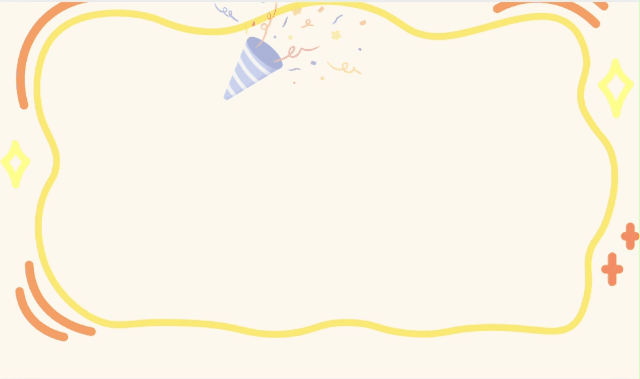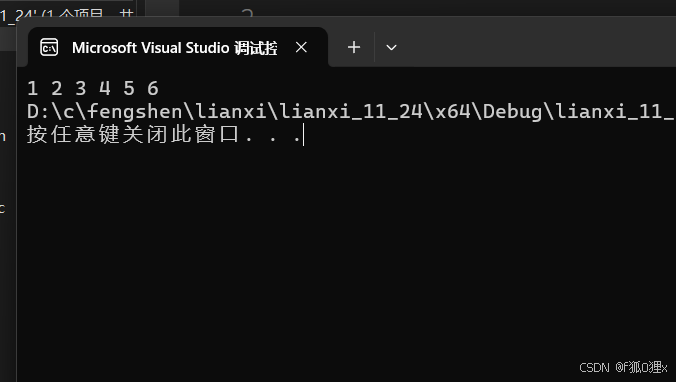🏝️专栏:【数据结构实战篇】
🌅主页:f狐o狸x
在前面的文章中我们用C语言实现了栈的数据结构,本期内容我们将实现队列的数据结构
一、队列的概念
队列:只允许在一端进行插入数据操作,在另一端进行删除数据操作的特殊线性表,队列具有先进先出FIFO(First In First Out)
入队列:进行插入操作的一端称为队尾
出队列:进行删除操作的一端称为队头
二、队列的实现
2.1 队列的定义
动用你聪明的小脑袋想一想队列的结构是啥样的,是不是从队尾插入数据,再从队头输出数据,那是不是在队列的结构里面需要一个头结点,还需要一个尾节点,为了方便后面的操作,我们再加一个size变量来记录当前队列的大小
typedef int QDatatype;
typedef struct QueueNode
{
QDatatype Data;
struct QueueNode* next;
}QueueNode;
typedef struct Queue
{
struct QueueNode* head;
struct QueueNode* tail;
int size;
}Queue;
2.2 队列的初始化
//初始化队列
void QueueInit(Queue* pq)
{
pq->size = 0;
pq->head = NULL;
pq->tail = NULL;
}2.3 队列入、出
其实这里就是简单的尾插和头删
//队列增
void QueuePush(Queue* pq, QDatatype x)
{
QueueNode* newnode = (QueueNode*)malloc(sizeof(QueueNode));
if (newnode == NULL)
{
perror("malloc fail");
return;
}
newnode->Data = x;
newnode->next = NULL;
if (pq->head == NULL)
{
assert(pq->tail == NULL);
pq->head = pq->tail = newnode;
}
else
{
pq->tail->next = newnode;
pq->tail = newnode;
}
pq->size++;
}
//队列删
void QueuePop(Queue* pq)
{
assert(pq);
assert(!QueueEmpty(pq));
QueueNode* cur = pq->head;
if (cur->next == NULL)
{
free(cur);
cur = NULL;
}
else
{
pq->head = pq->head->next;
free(cur);
cur = NULL;
}
pq->size--;
}
2.4 检查队列是否为空、队列大小
//队列大小
int QueueSize(Queue* pq)
{
assert(pq);
return pq->size;
}
//判断队列是否为空
bool QueueEmpty(Queue* pq)
{
assert(pq);
return pq->size == 0;
}2.5 返回队头、队尾
//返回队头
QDatatype QueueFront(Queue* pq)
{
assert(pq);
assert(!QueueEmpty(pq));
return pq->head->Data;
}
//返回队尾
QDatatype QueueBack(Queue* pq)
{
assert(pq);
assert(!QueueEmpty(pq));
return pq->tail->Data;
}2.6 测试队列
int main()
{
Queue Q = { 0 };
QueueInit(&Q);
QueuePush(&Q, 1);
QueuePush(&Q, 2);
QueuePush(&Q, 3);
QueuePush(&Q, 4);
QueuePush(&Q, 5);
QueuePush(&Q, 6);
while (!QueueEmpty(&Q))
{
printf("%d ", QueueFront(&Q));
QueuePop(&Q);
}
return 0;
}运行结果如下:
三、实战练习
学习了栈和队列的数据结构,我们现在就来练练手
3.1 有效的括号
力扣链接:有效的括号
给定一个只包括
'(',')','{','}','[',']'的字符串s,判断字符串是否有效
3.1.1题目分析
这个题可以用栈的结构来完成这个题,如果字符串中是左括号 ‘ ( ’ ‘ [ ’ ‘ { ’,则正常入栈,如果字符串为右括号‘ ) ’ ‘ ] ’ ‘ } ’,则将这个字符和栈顶元素对比,如果相等就进行下一次循环,如果没有匹配成功,则放回false,循环结束后,并且栈里没有元素了,就返回true,记得在每次返回的时候将空间释放了,不要有内存泄漏哈~
3.1.2 解题代码
对了,因为这里用的是c语言,因此我们需要自己手搓一个栈,不过问题不大啦
#include <stdio.h>
#include <stdlib.h>
#include <assert.h>
#include <stdbool.h>
typedef int StackDataType;
typedef struct stack
{
int* StackData;
int top;
int capacity;
}ST;
//初始化
void InitStack(ST* ps);
//销毁
void DestoryStack(ST* ps);
//增加
void STPush(ST* ps, StackDataType x);
//删除
void STPop(ST* ps);
//判断是否为空
bool STEmpty(ST* ps);
//栈顶位置
StackDataType STTop(ST* ps);
//初始化
void InitStack(ST* ps)
{
assert(ps);
ps->StackData = (StackDataType*)malloc(sizeof(StackDataType)*4);
if (ps->StackData == NULL)
{
perror("InitStack::malloc");
return;
}
ps->capacity = 4;
ps->top = 0;
}
//销毁
void DestoryStack(ST* ps)
{
assert(ps);
free(ps->StackData);
ps->StackData = NULL;
ps->capacity = 0;
ps->top = 0;
}
//增加
void STPush(ST* ps, StackDataType x)
{
assert(ps);
if (ps->top == ps->capacity)
{
StackDataType* tmp = (StackDataType*)realloc(ps->StackData,
sizeof(StackDataType) * ps->capacity * 2);
if(tmp == NULL)
{
perror("STPush::realloc");
return;
}
ps->StackData = tmp;
ps->capacity *= 2;
}
ps->StackData[ps->top] = x;
ps->top += 1;
}
//删除
void STPop(ST* ps)
{
assert(ps);
assert(!STEmpty(ps));
ps->top--;
}
//判断是否为空
bool STEmpty(ST* ps)
{
assert(ps);
return ps->top == 0;
}
//栈顶位置
StackDataType STTop(ST* ps)
{
assert(ps);
assert(!STEmpty(ps));
return ps->StackData[ps->top - 1];
}
bool isValid(char* s) {
ST st = {0};
InitStack(&st);
char* ps = s;
while(*s)
{
if(*s == '(' || *s == '[' || *s == '{')
{
STPush(&st, *s);//左括号入栈
}
else
{
if(STEmpty(&st))
{
DestoryStack(&st);
return false;
}
char top = STTop(&st);
STPop(&st);
if((*s == ')' && top != '(') ||
(*s == ']' && top != '[') ||
(*s == '}' && top != '{'))
{
DestoryStack(&st);
return false;
}
}
s++;
}
bool ret = STEmpty(&st);
DestoryStack(&st);
return ret;
}3.2 用队列实现栈
力扣链接:用队列实现栈
请你仅使用两个队列实现一个后入先出(LIFO)的栈,并支持普通栈的全部四种操作(push、top、pop 和 empty)
3.2.1 题目分析
题目要求我们用两个队列来实现栈的结构,因此我们可以先随便将数据输入到一个队列中,再把队列一中的数据除了最后一个,全部转移到另外一个空的队列中,这样就可以实现栈的操作
3.2.2 解题代码
这里也是同样的需要我们手搓一个队列出来,不过上面已经实现过来,所以我们直接cv一下
typedef int QDatatype;
typedef struct QueueNode
{
QDatatype Data;
struct QueueNode* next;
}QueueNode;
typedef struct Queue
{
struct QueueNode* head;
struct QueueNode* tail;
int size;
}Queue;
//初始化队列
void QueueInit(Queue* pq);
//销毁队列
void QueueDestroy(Queue* pq);
//队列增
void QueuePush(Queue* pq, QDatatype x);
//队列删
void QueuePop(Queue* pq);
//队列大小
int QueueSize(Queue* pq);
//判断队列是否为空
bool QueueEmpty(Queue* pq);
//返回队头
QDatatype QueueFront(Queue* pq);
//返回队尾
QDatatype QueueBack(Queue* pq);
//初始化队列
void QueueInit(Queue* pq)
{
pq->size = 0;
pq->head = NULL;
pq->tail = NULL;
}
//销毁队列
void QueueDestroy(Queue* pq)
{
assert(pq);
QueueNode* cur = pq->head;
while (cur)
{
QueueNode* del = cur;
cur = cur->next;
free(del);
}
pq->head = NULL;
pq->tail = NULL;
pq->size = 0;
}
//队列增
void QueuePush(Queue* pq, QDatatype x)
{
QueueNode* newnode = (QueueNode*)malloc(sizeof(QueueNode));
if (newnode == NULL)
{
perror("malloc fail");
return;
}
newnode->Data = x;
newnode->next = NULL;
if (pq->head == NULL)
{
assert(pq->tail == NULL);
pq->head = pq->tail = newnode;
}
else
{
pq->tail->next = newnode;
pq->tail = newnode;
}
pq->size++;
}
//队列删
void QueuePop(Queue* pq)
{
assert(pq);
assert(!QueueEmpty(pq));
if (pq->head->next == NULL)
{
free(pq->head);
pq->head = NULL;
}
else
{
QueueNode* next = pq->head->next;
free(pq->head);
pq->head = next;
}
pq->size--;
}
//队列大小
int QueueSize(Queue* pq)
{
assert(pq);
return pq->size;
}
//判断队列是否为空
bool QueueEmpty(Queue* pq)
{
assert(pq);
return pq->size == 0;
}
//返回队头
QDatatype QueueFront(Queue* pq)
{
assert(pq);
assert(!QueueEmpty(pq));
return pq->head->Data;
}
//返回队尾
QDatatype QueueBack(Queue* pq)
{
assert(pq);
assert(!QueueEmpty(pq));
return pq->tail->Data;
}
typedef struct {
Queue q1;
Queue q2;
} MyStack;
MyStack* myStackCreate() {
MyStack* pst = (MyStack*)malloc(sizeof(MyStack));
if(pst == NULL)
{
perror("myStackCreate::malloc");
}
QueueInit(&pst->q1);
QueueInit(&pst->q2);
return pst;
}
void myStackPush(MyStack* obj, int x) {
if(!QueueEmpty(&obj->q1))
{
QueuePush(&obj->q1,x);
}
else
{
QueuePush(&obj->q2,x);
}
}
int myStackPop(MyStack* obj) {
Queue* emptyQ = &obj->q1;
Queue* nonemptyQ = &obj->q2;
if(!QueueEmpty(&obj->q1))
{
emptyQ = &obj->q2;
nonemptyQ = &obj->q1;
}
while(QueueSize(nonemptyQ)>1)
{
QueuePush(emptyQ,QueueFront(nonemptyQ));
QueuePop(nonemptyQ);
}
int top = QueueFront(nonemptyQ);
QueuePop(nonemptyQ);
return top;
}
int myStackTop(MyStack* obj) {
if(!QueueEmpty(&obj->q1))
{
return QueueBack(&obj->q1);
}
else
{
return QueueBack(&obj->q2);
}
}
bool myStackEmpty(MyStack* obj) {
return QueueEmpty(&obj->q1) && QueueEmpty(&obj->q2);
}
void myStackFree(MyStack* obj) {
QueueDestroy(&obj->q1);
QueueDestroy(&obj->q2);
free(obj);
}本期内容到这里就完啦,感谢大家观看~
对了对了,留下你的三连吧,求你啦~ QAQ





